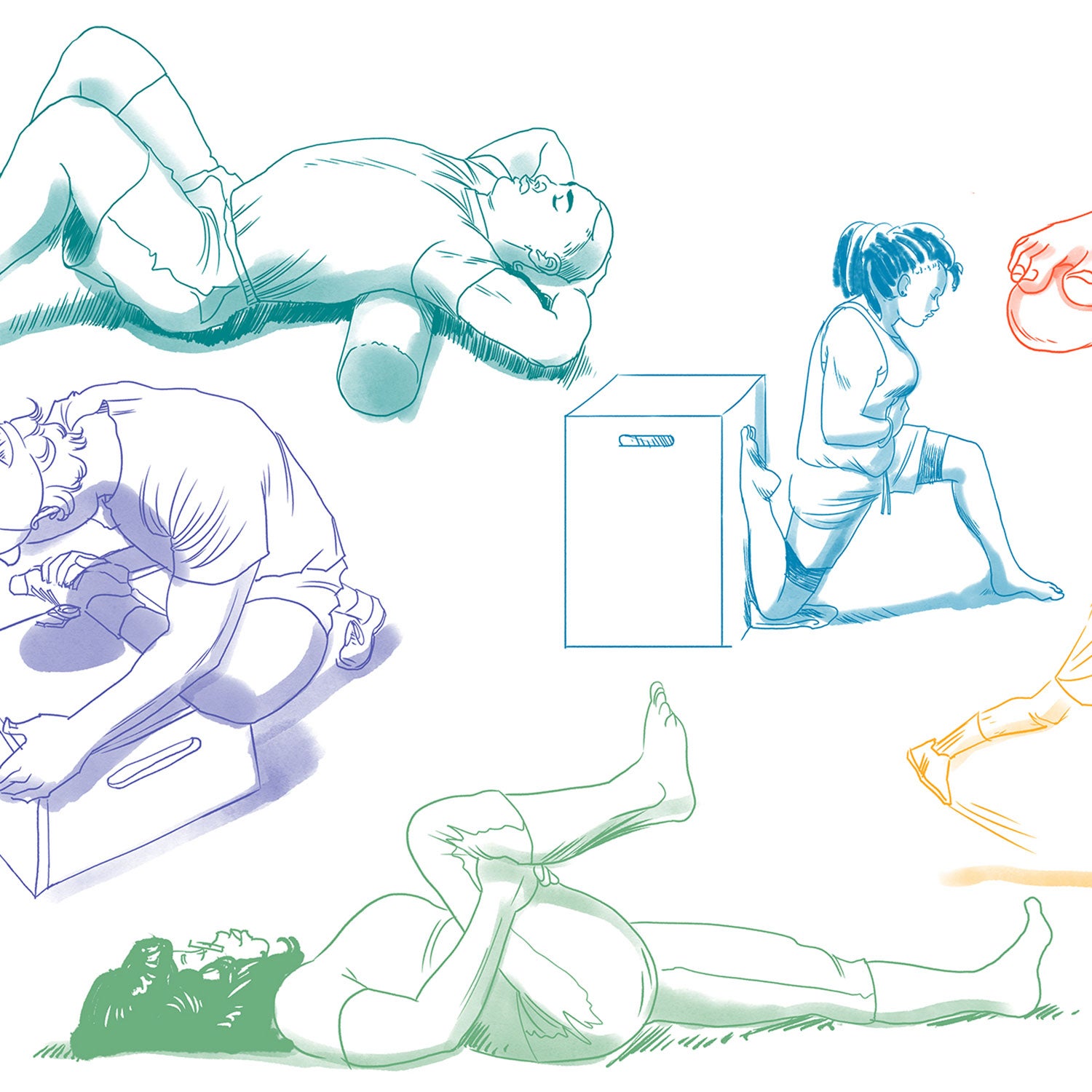Olympic cyclist┬áEvelyn Stevens, Olympic volleyball player┬á, big wave surfer┬áLaird Hamilton, and extreme kayaker┬áÁ■░¨▓╣╗ň╠ř│ó│▄╗ň╗ň▒▓ď┬áhave one thing in common: they all train with Kelly Starrett. A┬ádoctor of physical therapy at┬á, Starrett has┬ábuilt a reputation as┬á, which he calls foundational, not ancillary, to performance.┬áÔÇťThis isnÔÇÖt just about injury prevention,ÔÇŁ he says.┬áÔÇťItÔÇÖs about enabling proper form, which leads to enhanced function.”
I recently┬átalked to Starrett about his six favorite mobility exercises for athletes┬áto improve their range of motion. They can be completed just about anywhere, and while they’ll increase efficiency on the trail or road, they’ll also┬áboost general flexibility┬áand balance if performed daily.
Starrett recommends holding each stretch for two full minutesÔÇöwhat he calls ÔÇťthe minimum therapeutic doseÔÇŁÔÇöand alternating between contracting and relaxing the targeted muscles in each position.
In the Morning
1. Hip Flexion and External Rotation
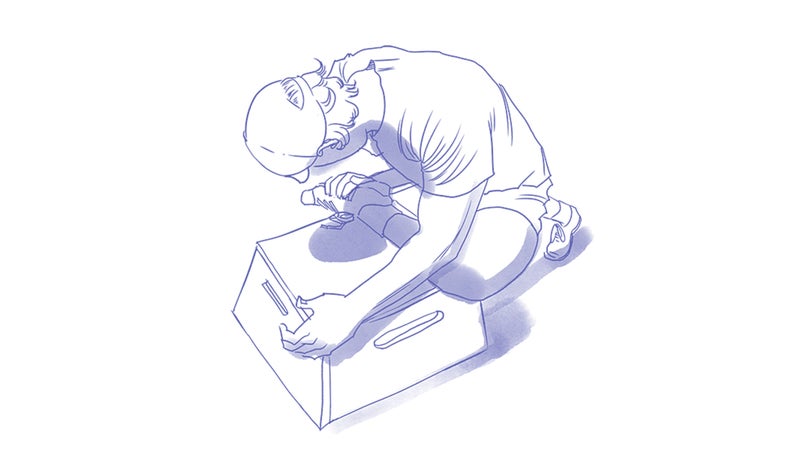
Stand in front of a flat surface┬áno taller than the top of your kneeÔÇölike a couch, bed, or table. Place on the prop and externally rotate your knee all the way down, so the outside of your calf and shin is flat against the surface. Think about it like a raised pigeon pose. Slowly work your right leg back and gently lean forward over the externally rotated leg, creating space in your hip and loosening your glute. Hold for two minutes, then switch legs.
2. Couch Stretch
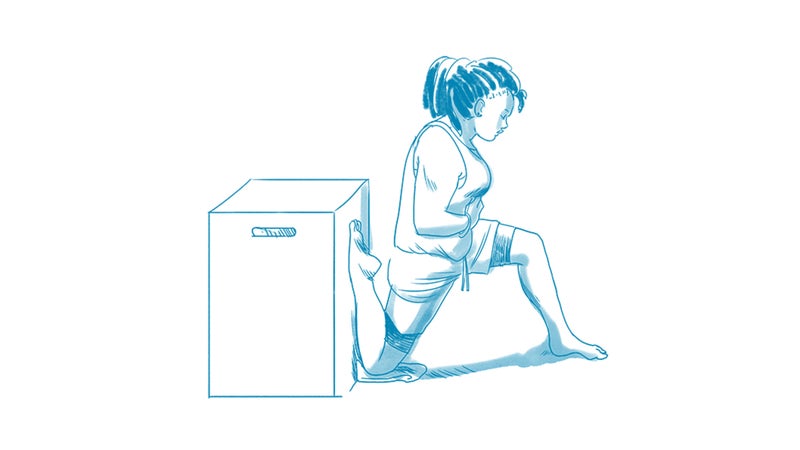
Begin kneeling with your feet behind you against a wall or some other sturdy, vertical surface. Move your right leg back so that your shin and foot are up against the wall. Next, step your left leg forward in a lunge position, while keeping your right shin flat against the wall. You should feel the stretch in your quadriceps and hip flexors. Experiment with arching your back, which helps engage the glutes, quads, and hip flexors. Hold for two minutes, then switch legs.
3. Thoracic Mobilization
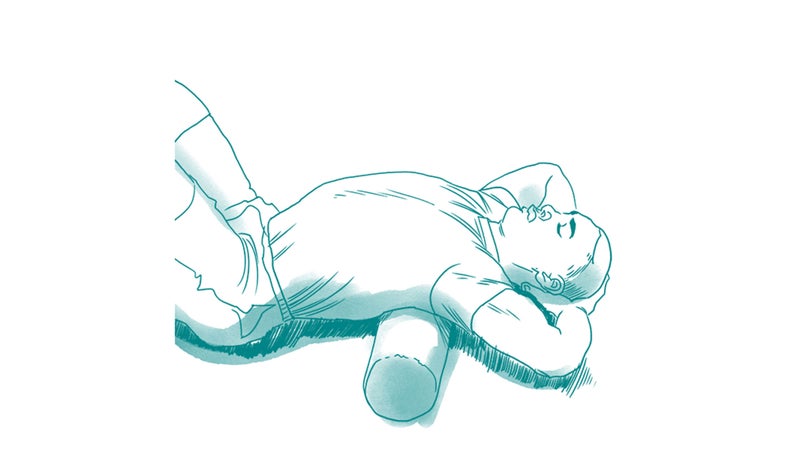
Lie down on your back with your feet on the ground and knees up, as if you were getting ready to do a sit-up. Place either a small foam roller or two lacrosse balls under your back, at the same height as your pecks. Gently roll up and down.
Right Before Exercise
4. Hip Mobilization
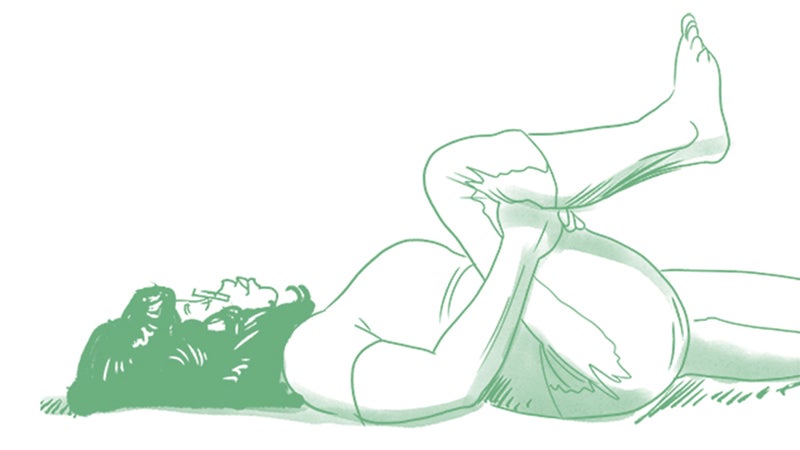
Begin by sitting on a table, bed, or, if you’re at the trail head,┬áon the hood of your car┬áwith your feet hanging in front of you. Lie back and allow your legs to dangle. Bring one knee to your chest and squeeze it toward your body, while your other leg dangles. You should feel this in the hip flexors of the hanging leg.
5. Leg Swings
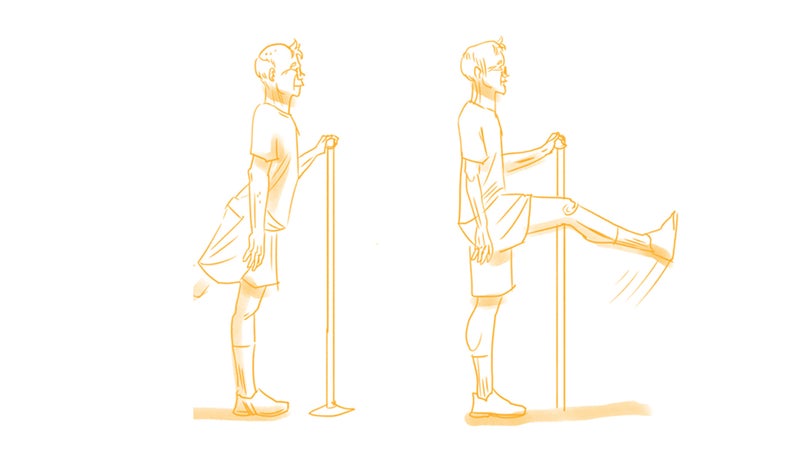
Stand parallel to a wall, tree, or something similarly supportive. Balance yourself against it with one arm. Begin swinging your outside leg forward and backward, gradually increasing the range of motion as you swing. Continue for 45 to 90 seconds and then switch legs.
At the End of the Day
6. Soft-Tissue Work
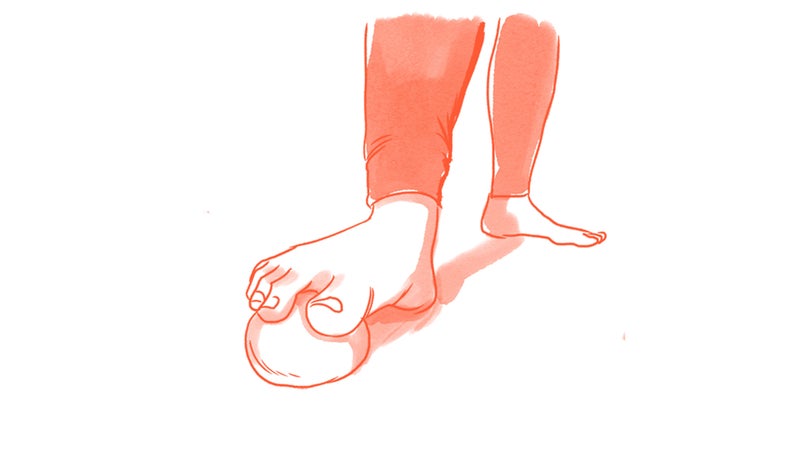
Following a long day, your muscles may accumulate small knots that can cause stiffness and lead to future injuries. Spending just 10 minutes on soft-tissue work at the end of the day helps to break up these adhesions and is an effective way to prevent what could become bigger issues.
Starrett recommends rolling the bottom of your feet out with a lacrosse or golf ball, using a rolling pin or lacrosse balls to roll out your shins, and rolling your quads out with a heavy medicine ball. During each move, stop the rolling motion at points of pain (while still applying pressure) and contract the muscle for five seconds, then release and take two deep breaths before you continue rolling.


